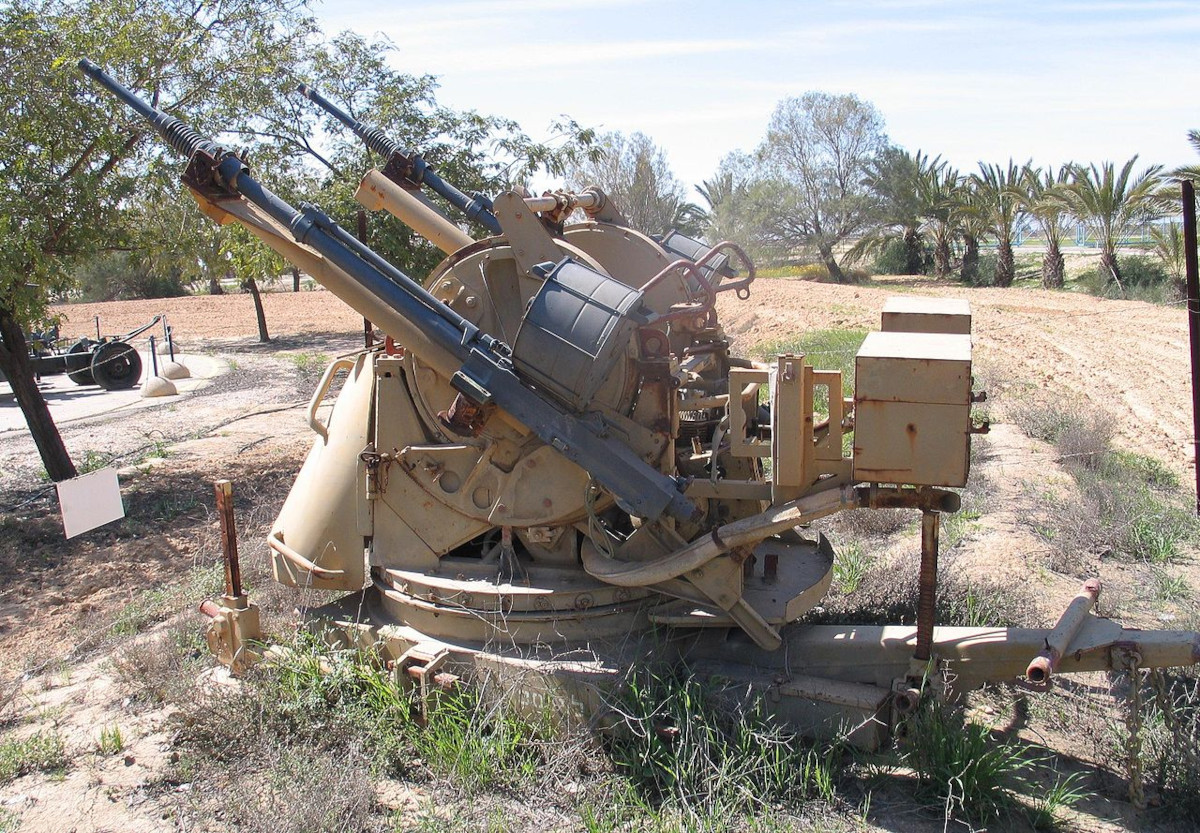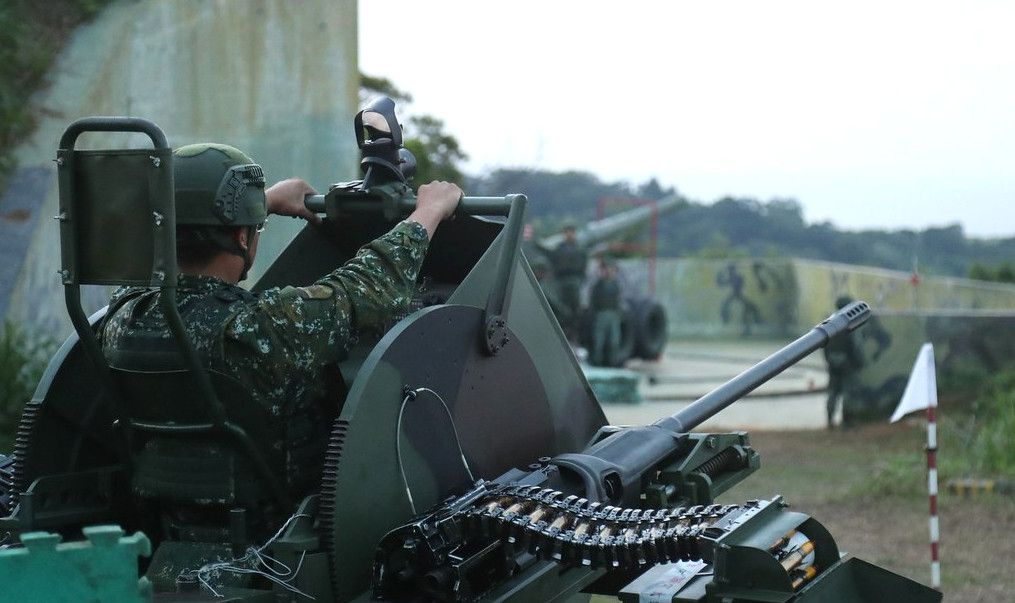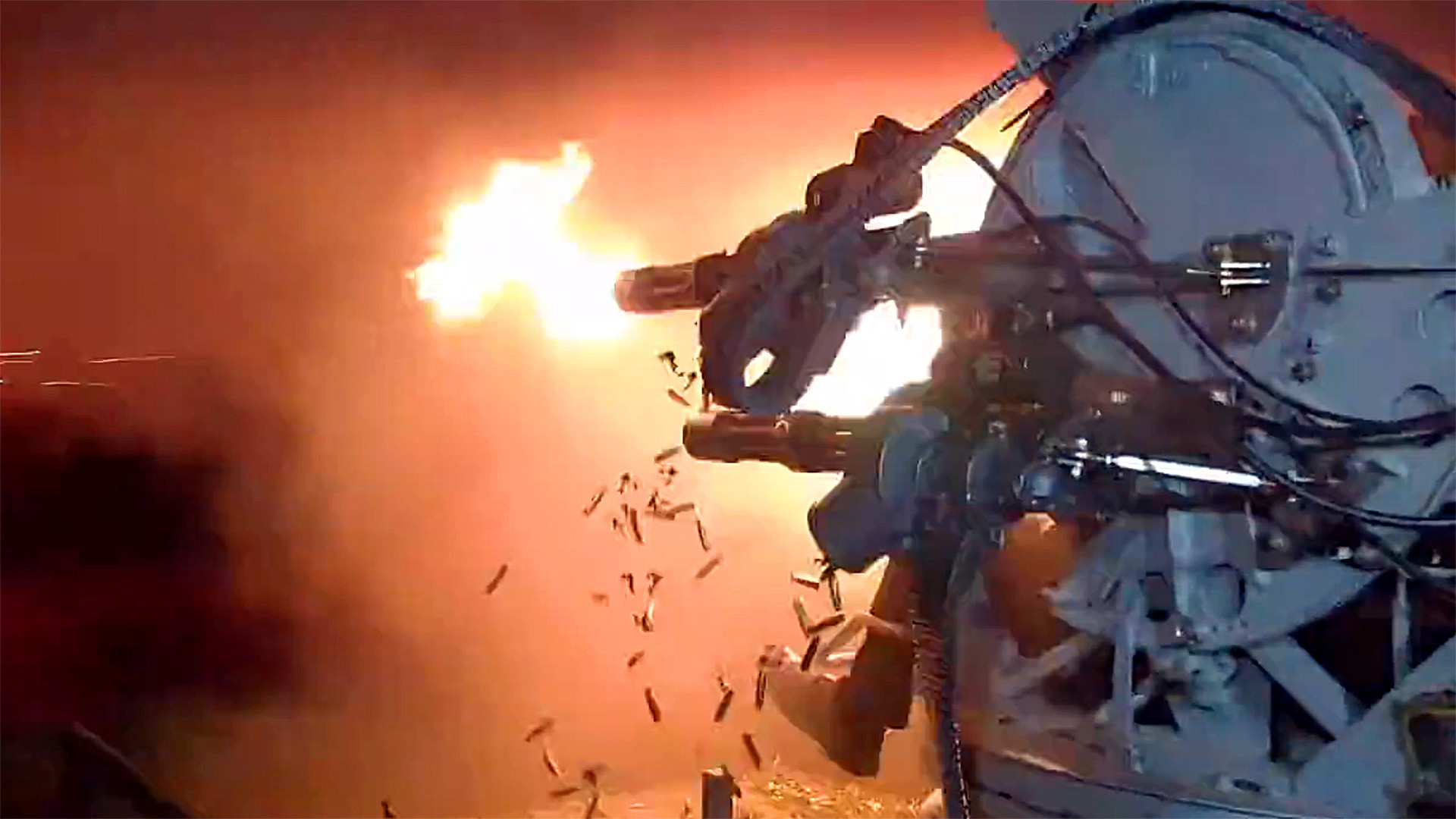If you were at the Big Sandy Shoot in Arizona last week – billed as the largest civilian machine gun shooting event in the world – you were likely treated to the sight and sound of four blazing-fast-firing Miniguns strapped to a World War II-era anti-aircraft gun mount unleashing on the range.
It’s unclear what exactly prompted this project, what specific components the weapon system consists of, and whether or not the individuals who crafted it see any future real-world military or other professional applications for it. Who was involved in putting the complete system together is also not entirely clear, but a post on the Big Sandy Shoot’s Instagram account specifically thanks Dillon Precision Products for bringing it to the event. Dillon Precision is the parent company of Dillon Aero, the best-known current manufacturer of Miniguns, and The War Zone has reached out to the company for more information.
From pictures and videos posted on social media, it is clear that the core of the system is four Miniguns mounted on a World War II vintage Maxson M45 quadruple machine gun mount, where the operator sits right in the middle of things.
“Huge thanks to everyone that was there to support and help me finish the quad minigun project. Ideas have been thrown around for 30 years and we finally made it happen,” George Dillon, grandson of Dillon Precision founder Mike Dillon, wrote in one post on Instagram accompanied by a montage of video clips of the Quad Minigun blasting away. “It was my grandfather, Mike Dillon, that had envisioned this, and if he was still here I’m sure we would’ve made him proud.”
Mike Dillon, who died in 2016, was an absolute giant in the U.S. civilian firearms community, as well as being a long-time pilot. He became best known first for his ammunition reloading products, but also developed various improvements for the Minigun, among other things.
George Dillon also shared some details about the quad minigun system on Instagram, saying that each gun was firing at the Dillon factory standard rate of approximately 3,000 rounds per minute, for a combined rate of fire of 12,000 rounds per minute. Each Minigun was linked to a magazine that could hold up to 3,000 rounds, for a total of 12,000 rounds ready to fire before the system would need to be reloaded.
“We ended up ‘only’ shooting 24,000 rounds as loading the belts into the onboard magazines is very tasking,” he wrote.
With each gun firing at 3,000 rounds per minute, it would only take 60 seconds of total firing time to let loose all 12,000 rounds in the magazines. Commercial ammunition prices in the United States vary widely based on type and quality, but at a price point of 75 cents a cartridge, firing this weapon system for a minute would cost $9,000.
The Minigun, originally developed by General Electric in the early 1960s, is an electrically-driven six-barrel Gatling-type 7.62x51mm machine gun. These iconic guns have been and continue to be employed on a variety of air, ground, and naval platforms, but are most commonly associated with their use as door guns on helicopters. The guns, and other similar rotary-barrel designs, have become staples in movies, video games, and other popular media, too.

It’s not immediately clear whether or not the Miniguns on the quad mount are Dillon’s standard M134D variants or examples of the company’s newer lightweight M134D-H design.
The M45 quad mount design dates back to the early 1940s and was originally intended to be armed with four .50 caliber M2 machine guns. The M45 is a small electrically-powered turret with a full 360 degrees of traverse. The operator, who sits inside and aims using a reflector gunsight, can elevate the guns up to 90 degrees or depress them down to negative five degrees. This made the whole system just as useful for engaging ground and surface targets as enemy aircraft, and it eventually earned the nickname “meat chopper” for its brutal effectiveness against enemy troops in the open.

The M45 evolved from Maxson’s M33 twin .50 caliber mount and was initially installed on U.S. Army half-tracks. After American forces gave up their half-tracks, the M45s were utilized in truck and trailer-mounted configurations. M45s could also be positioned in static emplacements on the ground. The mounts remained in U.S. military service for decades after World War II and saw service in both the Korean and Vietnam Wars.


Various American allies and partners received M45s over the years and some operators, such as Israel, modified them to use other guns beyond the original .50 caliber M2s. The Taiwanese military still has an M45 derivative, or at least a system clearly based on the same general design, in service that is armed with two 20mm M39 cannons, likely taken from decommissioned American-made F-5 fighter jets.


Power for the M45 was originally provided by two rechargeable six-volt batteries. As the picture in the Instagram post below shows, the Minigun-armed version, which needs additional power to run the guns themselves, uses at least two StartStick portable aircraft batteries.
As already noted, it’s not clear if there are plans to pitch this system for any practical applications, and the current design may not even have a sight on it – the video clips from the Big Sandy Shoot appear to show it firing tracer rounds for maximum visual effect and aiming. It does certainly offer a whithering amount of firepower, but also clearly burns through ammunition at an incredible rate.
No matter what, the sight of four Miniguns on an M45 quad mount all firing at once is certainly an awesome spectacle to behold.
Contact the author: joe@thedrive.com
